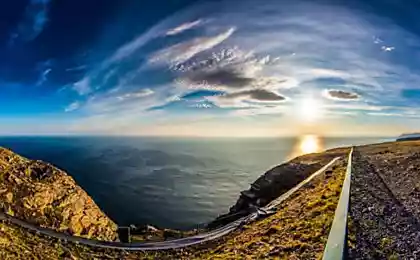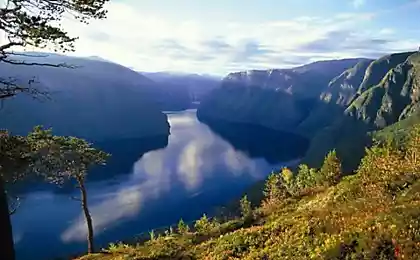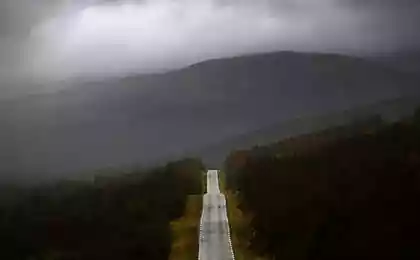809
Walking in Norway
In Norway, all have the right of access to nature, which is still governed by medieval norm allemannsretten. Neither the owner of the land (including the government) can not stop wanting to walk in any public place (except for the cultivated fields), to collect mushrooms and berries, to pitch a tent.

The only interesting exception to the northern regions - the owner of the land on which the swamp with cloudberries, has its exclusive right to collect. But he must himself this cloudberries collect, sell and pay the sales tax - or at strategic berry Pozar more industrious neighbors.

Norway is almost the only country in Europe where the preserved wooden churches of the medieval period. Although only 28 of them left, they are unique - in fact mostly built in XIII-XIV centuries!

Society for the Preservation of Ancient Monuments of Norway came back in 1844 (it has bought up old buildings to save), but even today wooden monuments are sometimes trying to destroy - mainly representatives of paganism, protesting against the "propagation," on top of the Christian doctrine. At the same time there are a number of marginal historians who claim that ancient wooden churches of Norway - a Gnostic churches Celtic church, built in honor of the dragon-Christ-Lucifer - because those buildings are still decorated with snake heads!

Roofs with grass - a business card of the country. They not only fit perfectly into the landscape, but also help save energy, improve sound insulation in buildings and provide an excellent microclimate. The surface of the foliage green roof in the 100 times the size of the roof, so that the grassy carpet area of only 15 square meters. m produces oxygen in an amount sufficient for breathing 10 people.

Some enthusiasts in Norway go further: in the mountains and tundra, you can see the entire farm houses, completely covered with turf. In addition to the above, the advantages of these fabulous homes are also trouble-free tourist attraction.

Bicycles in the Norwegian city - not just desirable, but a truly public means of transport.

While the number of municipalities offer all wishing to use the free two-wheeled vehicles, Oslo adopted another, more complex circuit - where you can buy a subscription. It costs very cheap - a little more than 10 dollars a year.

Bicycles in the country are so popular that there are bike paths, not only in the cities. Special road on which traffic is allowed only non-motorized transport, cut the whole country, and in the mountains dozens of tunnels for motor cyclists are built in parallel.

On older Norwegian narrow-gauge railway can meet amazing invention - velodreziny. Tourists even offer special railcars trips to picturesque places.

Vigeland Park in Oslo - a big collection of hundreds of stunning works of the sculptor Gustav Vigeland (1869-1943).
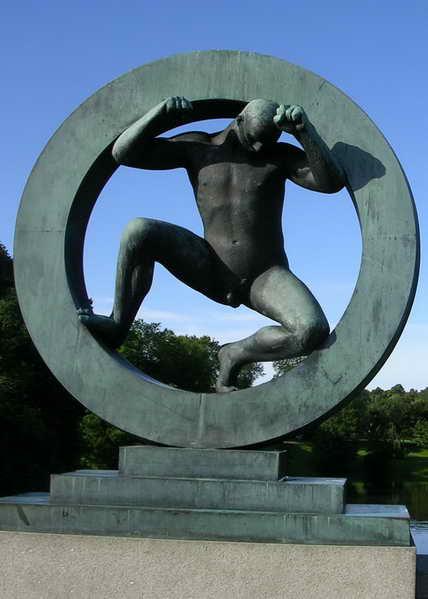
But the most interesting in the history of this park is that since 1905 the municipality of Oslo, recognizing talented compatriot, allocated free of charge to the studio, and in 1921 built a new community at the expense of a large house.
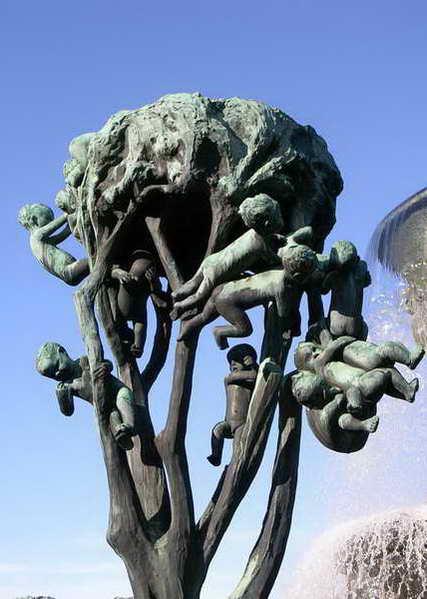
In exchange, the artist promised to donate a city all its subsequent work, including sculpture, drawings, prints and patterns.

It was perhaps the most successful and beautiful bargain City Hall during the existence of Oslo - in fact since the days of Michelangelo's world has not seen such a prolific sculptor Gustav Vigeland left behind about 1,600 sculptures, hundreds of prints and thousands of drawings.
Andrei Rybakov via

Source:

The only interesting exception to the northern regions - the owner of the land on which the swamp with cloudberries, has its exclusive right to collect. But he must himself this cloudberries collect, sell and pay the sales tax - or at strategic berry Pozar more industrious neighbors.

Norway is almost the only country in Europe where the preserved wooden churches of the medieval period. Although only 28 of them left, they are unique - in fact mostly built in XIII-XIV centuries!

Society for the Preservation of Ancient Monuments of Norway came back in 1844 (it has bought up old buildings to save), but even today wooden monuments are sometimes trying to destroy - mainly representatives of paganism, protesting against the "propagation," on top of the Christian doctrine. At the same time there are a number of marginal historians who claim that ancient wooden churches of Norway - a Gnostic churches Celtic church, built in honor of the dragon-Christ-Lucifer - because those buildings are still decorated with snake heads!

Roofs with grass - a business card of the country. They not only fit perfectly into the landscape, but also help save energy, improve sound insulation in buildings and provide an excellent microclimate. The surface of the foliage green roof in the 100 times the size of the roof, so that the grassy carpet area of only 15 square meters. m produces oxygen in an amount sufficient for breathing 10 people.

Some enthusiasts in Norway go further: in the mountains and tundra, you can see the entire farm houses, completely covered with turf. In addition to the above, the advantages of these fabulous homes are also trouble-free tourist attraction.

Bicycles in the Norwegian city - not just desirable, but a truly public means of transport.

While the number of municipalities offer all wishing to use the free two-wheeled vehicles, Oslo adopted another, more complex circuit - where you can buy a subscription. It costs very cheap - a little more than 10 dollars a year.

Bicycles in the country are so popular that there are bike paths, not only in the cities. Special road on which traffic is allowed only non-motorized transport, cut the whole country, and in the mountains dozens of tunnels for motor cyclists are built in parallel.

On older Norwegian narrow-gauge railway can meet amazing invention - velodreziny. Tourists even offer special railcars trips to picturesque places.

Vigeland Park in Oslo - a big collection of hundreds of stunning works of the sculptor Gustav Vigeland (1869-1943).

But the most interesting in the history of this park is that since 1905 the municipality of Oslo, recognizing talented compatriot, allocated free of charge to the studio, and in 1921 built a new community at the expense of a large house.

In exchange, the artist promised to donate a city all its subsequent work, including sculpture, drawings, prints and patterns.

It was perhaps the most successful and beautiful bargain City Hall during the existence of Oslo - in fact since the days of Michelangelo's world has not seen such a prolific sculptor Gustav Vigeland left behind about 1,600 sculptures, hundreds of prints and thousands of drawings.
Andrei Rybakov via

Source:



